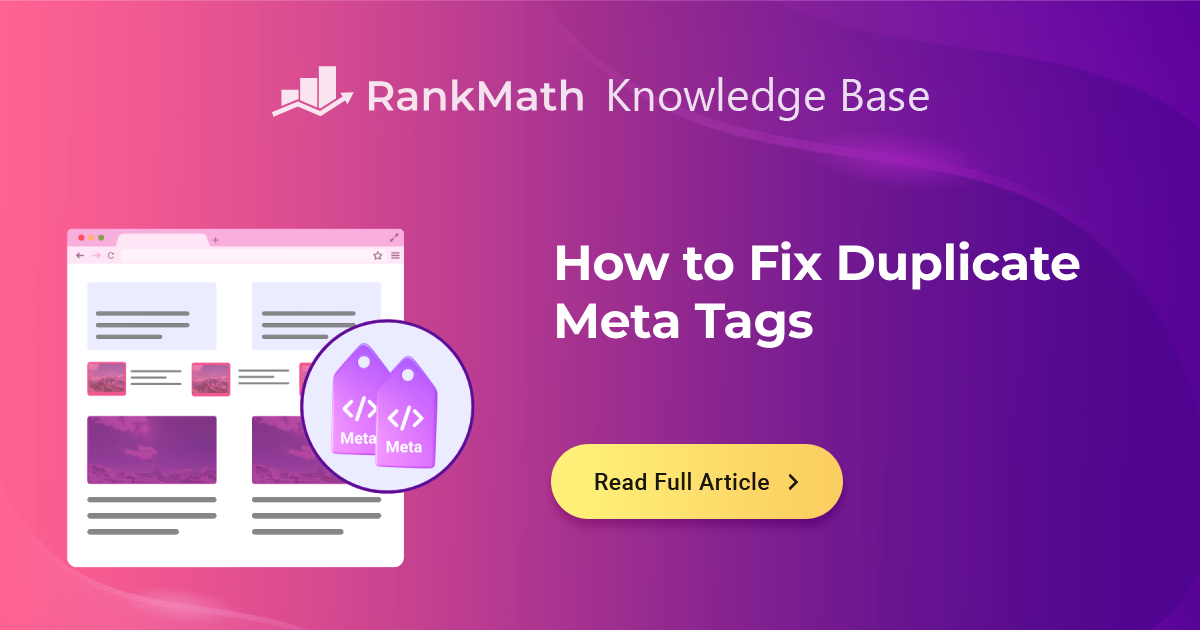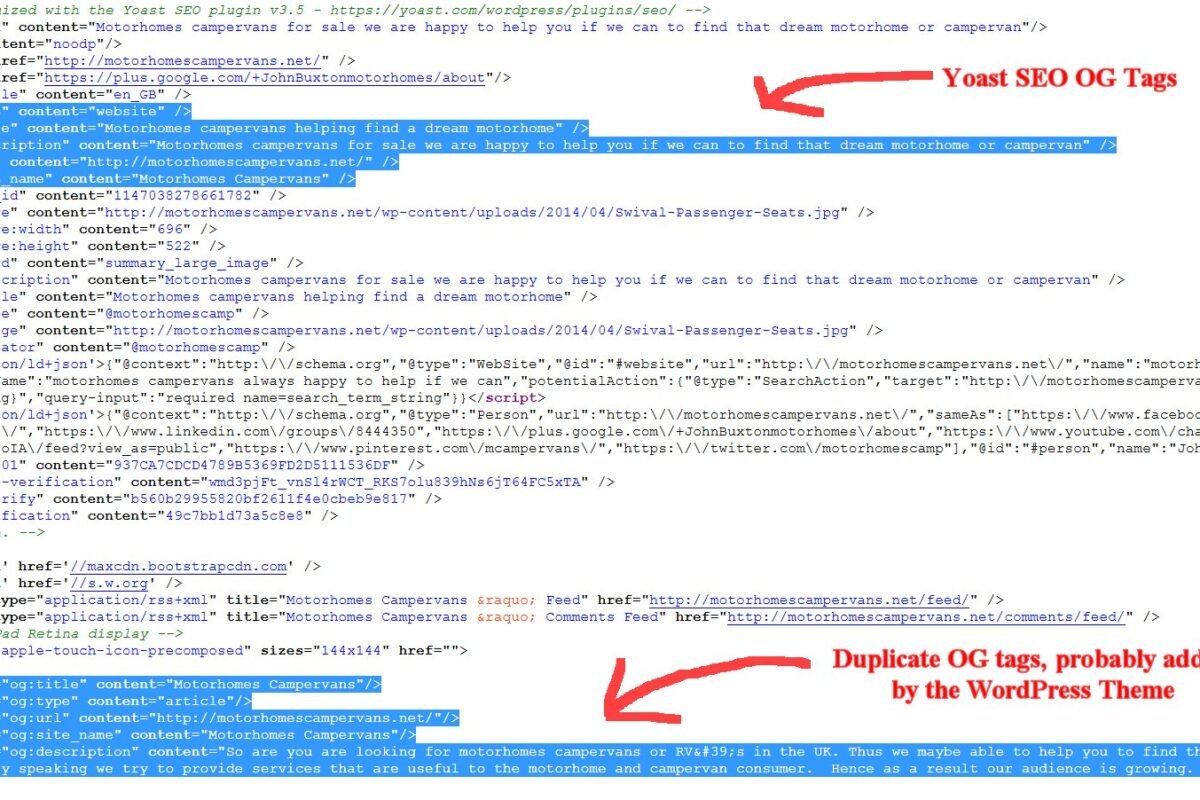
In the realm of Search Engine Optimization (search engine optimization), meta tags are essential elements that significantly impact a website’s visibility and ranking. Among the various search engine optimization challenges, duplicate meta tags are a common issue that can hinder your website’s performance. This thorough guide explores how to avoid duplicate meta tags, ensuring your website remains rival and search engine-friendly. We’ll delve into understanding meta tags, determineing duplicates, and implementing effective strategies for Meta Elements text Optimization.
Understanding Meta Tags and Their Importance
Meta tags are snippets of text that describe a page’s text; they don’t appear on the page itself, but in the page’s source code. They offer metadata about the HTML document to search engines and website visitors. The most crucial meta tags include:
- Meta Title: Specifies the title of the web page, which is displayed in search engine outcomes pages (SERPs) and browser tabs.
- Meta Description: A brief summary of the page’s text, often used by search engines to display a snippet in search outcomes.
- Robots Meta Tag: Instructs search engine crawlers on how to crawl or index a page.
Meta tags play a vital function in search engine optimization because they help search engines understand the context of your text. Accurate and unique meta tags can improve your website’s ranking, boost click-through rates (CTR), and drive more organic traffic. However, duplicate meta tags can confuse search engines, dilute your search engine optimization efforts, and negatively impact your website’s performance.
Why Duplicate Meta Tags Harm search engine optimization
Duplicate meta tags occur when multiple pages on a website have the same meta title and/or meta description. This issue can arise from various factors, such as:
- Templated Websites: Websites built on templates may inadvertently use the same default meta tags across multiple pages.
- Dynamic text: Dynamically generated pages, like those in e-commerce sites, can sometimes have identical meta descriptions if not properly configured.
- Human Error: Manual entry of meta tags can lead to copy-pasting the same information across varied pages.
Duplicate meta tags can harm your search engine optimization in several ways:
- Confusion for Search Engines: Search engines may struggle to determine which page is most pertinent for a given query, leading to lower rankings.
- Reduced Click-Through Rates: Generic or repetitive meta descriptions are less likely to entice users to click on your search outcome.
- Indexation Issues: Search engines may penalize your website by not indexing all of your pages, affecting your overall visibility.
- Wasted Crawl Budget: Search engine crawlers may waste time indexing duplicate text instead of focusing on unique and valuable pages.
determineing Duplicate Meta Tags
Before you can fix duplicate meta tags, you need to determine them. Several tools and techniques can help:
- search engine optimization Auditing Tools: Tools like SEMrush, Ahrefs, and Screaming Frog can crawl your website and determine duplicate meta titles and descriptions. These tools offer detailed reports, highlighting the affected pages and the extent of the duplication.
- Google Search Console: Google Search Console can alert you to potential issues with your website’s meta tags, including duplicates. Check the HTML Improvements section for warnings and recommendations.
- Manual Review: For smaller websites, manually reviewing the source code of each page can be feasible. Use your browser’s “View Source” function to inspect the meta tags in the
section of each page.
When using search engine optimization auditing tools, configure them to crawl your entire website. Pay close attention to reports that flag duplicate meta descriptions and titles. Prioritize fixing the most critical issues first, such as those affecting high-traffic pages.
Strategies to Avoid and Fix Duplicate Meta Tags
Once you’ve identified duplicate meta tags, it’s time to take action. Here are several strategies to avoid and fix this issue:
- Create Unique Meta Descriptions: Write original and compelling meta descriptions for each page. Focus on accurately summarizing the page’s text and including pertinent search terms. Aim for a length of 150-160 characters to ensure the entire description is visible in search outcomes.
- maximize Meta Titles: Craft unique and descriptive meta titles that accurately reflect the page’s topic. Include your primary search term and keep the title under 60 characters to prevent truncation in search outcomes.
- Use Canonical Tags: Implement canonical tags (
) to tell search engines which version of a page is the preferred one. This is particularly useful for e-commerce sites with multiple URLs for the same product. - Implement Dynamic Meta Tags: For dynamically generated pages, use server-side scripting to automatically generate unique meta descriptions based on the page’s text. For example, an e-commerce site can use the product name and description to create a unique meta description for each product page.
- Regular Website Audits: Conduct regular search engine optimization audits to determine and address any new instances of duplicate meta tags. This proactive approach helps maintain your website’s search engine optimization health over time.
- Educate Your Team: If you have a team of text creators or website managers, educate them on the importance of unique meta tags and offer instructions for creating them.
optimal Practices for Meta Elements text Optimization
To maximize the efficacy of your meta tags, follow these optimal practices:
- Relevance: Ensure your meta tags accurately reflect the text of the page. Misleading meta tags can lead to a poor user experience and lower rankings.
- search terms: Include pertinent search terms in your meta titles and descriptions, but avoid search term stuffing. Focus on natural language and readability.
- Call to Action: Use a compelling call to action in your meta description to encourage users to click on your search outcome. For example, “Learn more,” “Shop now,” or “Get started today.”
- Uniqueness: Make sure each page has a unique meta title and description. Avoid using the same meta tags across multiple pages.
- Length: Keep your meta titles under 60 characters and your meta descriptions under 160 characters to ensure they are fully visible in search outcomes.
- Mobile Optimization: Ensure your meta tags are maximized for mobile devices. Mobile search outcomes often display shorter meta descriptions, so prioritize the most crucial information.
By following these optimal practices, you can create meta tags that improve your website’s visibility, boost click-through rates, and drive more organic traffic. Remember that Meta Elements text Optimization is an ongoing process that requires regular monitoring and adjustments.
Avoiding duplicate meta tags is crucial for maintaining a website’s search engine optimization health and ensuring accurate representation in search engine outcomes. By understanding the importance of unique meta descriptions, utilizing search engine optimization tools for auditing, implementing canonical tags, and regularly monitoring your website, you can effectively prevent and address duplicate meta tags. This proactive approach enhances your website’s visibility, improves click-through rates, and contributes to a better user experience. Remember, consistent Meta Elements text Optimization is key to long-term search engine optimization achievement.
